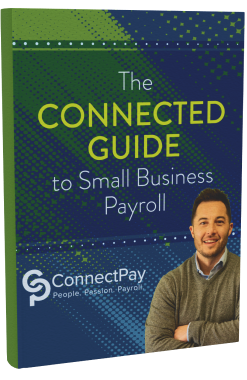Payroll Retention Done Right: Best Practices for CPAs to Help Clients Organize, Secure, and Archive Payroll Files

Payroll records rarely get much attention, yet they quietly hold the story of how a business runs — who was paid, when, and why. For CPAs, helping clients manage those records isn’t just about ticking boxes for compliance. It’s about keeping information accessible, accurate, and secure so that when questions arise, from auditors, employees, or the IRS, the answers are already in order.
The right payroll retention strategy turns recordkeeping into a practical advantage, and CPAs are in the perfect position to help their clients make that happen.
Why payroll retention matters and how CPAs can help
Payroll retention protects both employees and employers by creating a reliable paper trail of every payment, deduction, and adjustment. These records provide proof that wages were calculated correctly, taxes were handled properly, and benefits were administered as promised. A well-kept payroll archive gives both sides confidence that the numbers add up, and that the business is operating transparently and in good faith.
When retention practices slip, that confidence disappears. Missing or incomplete records can lead to payroll disputes, compliance violations, and unnecessary penalties. Even something as simple as a misplaced time sheet or outdated file can stall an audit or trigger extra work during tax season, costing time and money that could have been avoided.
CPAs are uniquely equipped to prevent those problems. They understand the technical side, what specific forms must be saved, how long to keep them, and how data must be secured, but they also grasp the day-to-day realities of running payroll.
Payroll retention checklist: Practical tips for organizing and securing records
Here’s a practical checklist to guide clients through the essentials:
- Keep payroll categories distinct. Wages, taxes, benefits, time records, and any related correspondence should each have their own space in the system.
- Establish retention timelines that match both federal and state requirements, and set a date to review them every year.
- Digitize older paper records for easier access, but keep physical copies of documents that regulations require in hard form.
- Encrypt all digital payroll files and back them up securely, ideally using more than one storage location or cloud service.
- Restrict access to payroll systems, granting entry only to authorized staff, and turn on multifactor authentication wherever possible.
- Protect physical files with locked storage, limited office access, and a clear record of who handles sensitive documents.
- Train employees regularly to recognize phishing, data leaks, or careless handling of private information.
- Use version control and audit trails to monitor changes, approvals, and deletions so every action leaves a traceable record.
- Review and test the retention process periodically to ensure it still meets compliance needs and internal standards.
Building a repeatable payroll retention workflow
Payroll retention works best when it becomes part of a regular routine instead of an occasional task. A simple written policy helps to outline who’s responsible for records, how long to keep them, and where they’re stored. Clear direction makes the process easier to follow and maintain, even when there are changes to staff.
CPAs can help clients connect payroll retention to their regular financial reviews so updates happen naturally. Automation tools and software integrations can handle much of the repetitive work, such as scheduling backups or flagging documents that are due to expire. These small steps make compliance smoother and reduce the chance of mistakes.
Setting a review period, for example, every few months or twice a year, keeps the system up to date with changing laws or business needs. Ongoing communication between CPAs and clients ensures that any new rules or tools are adopted quickly. When payroll retention becomes a steady part of the workflow, accuracy and compliance tend to take care of themselves.
The quiet value of payroll retention
Good payroll retention rarely stands out, and that’s what makes it work. When records are organized, secure, and reviewed on schedule, they quietly protect the business in the background. With a steady system in place, CPAs can help clients turn routine recordkeeping into lasting peace of mind.






